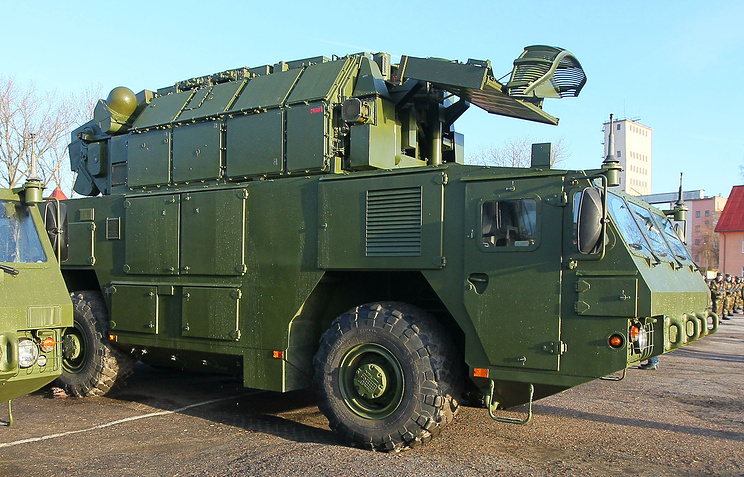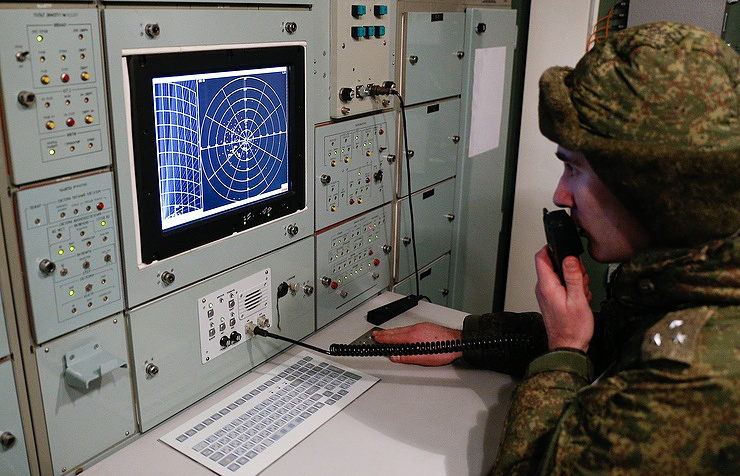Hindustani78
BANNED

- Joined
- Apr 8, 2014
- Messages
- 40,471
- Reaction score
- -47
- Country
- Location
This week Russian civil and defense concern Roselektronika premiered Polyana-D4M1, an automated command and control system for air defense, at the IDEX-2017 defense exhibition in Abu Dhabi. Sputnik gets into the details of what exactly the system is capable of.
Speaking to Expert Online, a representative of Rostec, the state holding company which Roselektronika is part of, explained that the Polyana-D4M1 command and control system is designed to control anti-aircraft missile systems with a variety of ranges, including long-range systems like the S-300, medium-range weapons like the Buk-M1, and short-range systems like the Tor-M1 missile system.
According to Rostec, the Polyana-D4M1 is designed to help defend vast territories of up to 800 by 800 square kilometers (which is about one hundred thousand square kilometers larger than the country of France) against air attack. The system can monitor up to 500 enemy objects at a time, tracking up to 255 of them in real time.
Equipped with 20 data channels, the system collects and processes information from both ground- and air-based radar systems, as well as air traffic control centers. Polyana can communicate with up to 14 anti-aircraft missile systems, command posts and headquarters simultaneously.
In other words, the system coordinates air defense – protecting critical government facilities, industrial areas, military bases and areas where military units may be deployed. In a conflict situation, the Polyana-D4M1 becomes a fire control system for subordinate air defense installations on the basis of data it receives from radar reconnaissance.
The response time for the C&C system (i.e. the time between when Polyana receives the signal and the time it communicates it to subordinate air defense systems to fire) is only 2-3 seconds.
The Polyana-D4M1 package includes the mobile command point itself, a command staff vehicle, a support vehicle, and two mobile diesel electrical generating stations.
According to Rostec, the system is equipped with built-in artificial intelligence and, consequently, is capable of accumulating knowledge. The system is capable of managing air defense in three basic modes –manual (based entirely on operator commands), semi-automatic (the operator is issued recommendations and chooses whether to approve them or not), and fully automatic (where the operator does not take part in the control process, and decisions are managed by AI).
Given the system's use of modern electronics, it is subject to incremental improvements –from the expansion in the number of controllable missile systems, to expansion in the number of radar systems providing it with data.
The Polyana-D4M1 is capable of 'plugging in' to both Russian and foreign-made air defense systems. Accordingly, Rostec says that the system is flexible enough to be a good buy for foreign buyers, since it can be adapted and integrated into the air defense control systems of any country.
Development of the Polyana-D4, the D4M1's predecessor, began in the late Soviet period, with the system adopted into the Soviet Army's air defense forces starting in 1986. Production of the system was initially organized at the Minsk Electromechanical Plant, but later transferred to the Penza Radio Factory in Penza, central Russia. Since then, the system has been given multiple and substantive upgrades, taking into account the serious advances in the radio-electronic industry in recent years.
Speaking to Expert Online, a representative of Rostec, the state holding company which Roselektronika is part of, explained that the Polyana-D4M1 command and control system is designed to control anti-aircraft missile systems with a variety of ranges, including long-range systems like the S-300, medium-range weapons like the Buk-M1, and short-range systems like the Tor-M1 missile system.
According to Rostec, the Polyana-D4M1 is designed to help defend vast territories of up to 800 by 800 square kilometers (which is about one hundred thousand square kilometers larger than the country of France) against air attack. The system can monitor up to 500 enemy objects at a time, tracking up to 255 of them in real time.
Equipped with 20 data channels, the system collects and processes information from both ground- and air-based radar systems, as well as air traffic control centers. Polyana can communicate with up to 14 anti-aircraft missile systems, command posts and headquarters simultaneously.
In other words, the system coordinates air defense – protecting critical government facilities, industrial areas, military bases and areas where military units may be deployed. In a conflict situation, the Polyana-D4M1 becomes a fire control system for subordinate air defense installations on the basis of data it receives from radar reconnaissance.
The response time for the C&C system (i.e. the time between when Polyana receives the signal and the time it communicates it to subordinate air defense systems to fire) is only 2-3 seconds.
The Polyana-D4M1 package includes the mobile command point itself, a command staff vehicle, a support vehicle, and two mobile diesel electrical generating stations.
According to Rostec, the system is equipped with built-in artificial intelligence and, consequently, is capable of accumulating knowledge. The system is capable of managing air defense in three basic modes –manual (based entirely on operator commands), semi-automatic (the operator is issued recommendations and chooses whether to approve them or not), and fully automatic (where the operator does not take part in the control process, and decisions are managed by AI).
Given the system's use of modern electronics, it is subject to incremental improvements –from the expansion in the number of controllable missile systems, to expansion in the number of radar systems providing it with data.
The Polyana-D4M1 is capable of 'plugging in' to both Russian and foreign-made air defense systems. Accordingly, Rostec says that the system is flexible enough to be a good buy for foreign buyers, since it can be adapted and integrated into the air defense control systems of any country.
Development of the Polyana-D4, the D4M1's predecessor, began in the late Soviet period, with the system adopted into the Soviet Army's air defense forces starting in 1986. Production of the system was initially organized at the Minsk Electromechanical Plant, but later transferred to the Penza Radio Factory in Penza, central Russia. Since then, the system has been given multiple and substantive upgrades, taking into account the serious advances in the radio-electronic industry in recent years.

















